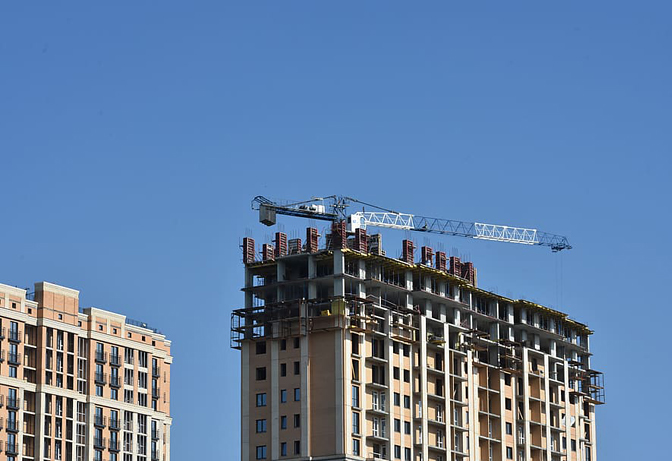words Alexa Wang
Cashflow sometimes dictates that you don’t have any deposit available for your next development. It is a situation that developers often find themselves in, particularly when they have multiple projects on the go or are waiting to sell properties on a completed development.
Here are the different ways to fund developments even without any deposit:

I. 100% Development Finance
It is also referred to as Joint Venture Development Finance. Here, the lender provides all the funds needed to acquire the site and complete the construction. Once sold, the profits are then shared between the developer and lender.
Only experienced developers have access to 100% property development finance and only in situation where planning permission has been granted already.
The scheme will have to be of a high GDV, typically in excess of $1million and an excellent return on investment. The lender will determine whether interest is payable. Some will allow the interest to be rolled up while others may not charge interest and just take their share of profit as payment.
Lenders that provide this facility want to work only with developers with an excellent track record of delivering profitable developments. They can structure the facility such that interest is charged on the loan facility that they will receive after the development has been sold, along with a split of the final profit.
II. Private Investors
A private investor may be interested in coming on board with you if a scheme is particularly strong. Typically, this would be by means of a Special Purpose Vehicle (SPV), which is a limited company set up for managing the project.
Some investors may fund the project but leave its management up to you while others prefer being more involved. It is important to agree up front how everything will be managed to avoid disagreements further down the line.
It can be particularly difficult to find a private investor especially if you are new to the world of development. There’s a risk that once you share the details of the proposed project with an investor, they may opt to take on the project for themselves and purchase the property/site without involving you. So, looking into the investor’s track record is essential before discussing the details of your project.

III. A Private Investor and Senior Development Finance Combo
Here, you work with a private investor and then apply jointly for development finance with them, for the main part of the investment needed. Simply put, the private investor supplies the deposit money that the developer lacks.
It can be advantageous for both parties. For the developer, it means that finding a private investor should be easier since they won’t have to put in so much capital. The private investor, on the other hand, will potentially be looking at a bigger return even after making a smaller financial input into the project initially. If you’re a property developer, for example, you’ll find that there are many subordinated debt financing uses for property developers that will help you to finance your projects in a more low-risk way.
IV. Equity Release from Your Own Home or Other Properties You Own
If you have equity that’s tied up either in your own home or other properties that you own, it is possible to release it through a re-mortgage, secured loan, or short-term finance such as a bridging loan to provide the needed deposit.
It can be a relatively quick and easy route to take if you don’t have any other way of raising a deposit, but it obviously means that the development will be completely funded via debt. It will also mean that you will be left with extra debt in case the project fails to deliver as you had originally planned.
V. Provide Extra Security
If you have additional assets in the form of other properties, it is possible to use them as extra security for your loan. This will reduce the lender’s loan to value figure because the loan will be spread across the value of the development, together with the additional properties that are being offered as security.
VI. Buy Under value and Refurbish
Lenders may sometimes consider lending 100% of the property’s purchase price if you can purchase it for less than its open market value. For instance, if you pay a price that’s 70 percent of the open market value, then a lender could be willing to fund it on the basis that there’s extra value in the property.
You should take care here, however. You might assume that you have a really good deal, but it is important to ask yourself why you were actually able to purchase under value. Sellers usually don’t like throwing money away, so will always try getting the best price for the property. If your offer is the best, then chances are it is the real value of the property.
So, why would a surveyor then value it higher? He has to determine what the value of the property is for the lender, and surely this is the sale price, being it is the best genuine offer the seller has received. Still, there are circumstances when you can purchase a property under value. For example
Buying from a relative that’s making a gift and selling at a discounted price.
The buyer could have agreed to a deal with the seller – for instance, a developer could have approached the owner of some land that doesn’t have planning permission and agreed to buy it from them for a particular price. The buyer then works to obtain planning permission on the land.
Once planning permission is granted, the property’s value will increase since it now has planning permission. Based on this new and higher value, the buyer is able to arrange finance, even though they are buying the land at a lower price than had been previously agreed.
Similarly, a price could have already been agreed upon for a property, but prior to the completion of the purchase the buyer does some improvement to the property. The work raises the property’s value, which means more finance can be secured against it, but the purchase price remains at the level agreed upon previously.
VII. Short Lease Properties
The value of a leasehold property typically falls as the end of the lease term approaches. If the current leaseholder is unable to extend the lease the property may come onto the market at a discounted price.
If you finance the lease extension when you make the purchase, you could obtain a property that has a considerable amount of equity in it. So, the same principle applies as with purchasing properties under value, so it may be possible to obtain 100% funding. This will be on the basis that at the time of completion the property is actually worth considerably higher than you would have paid.









